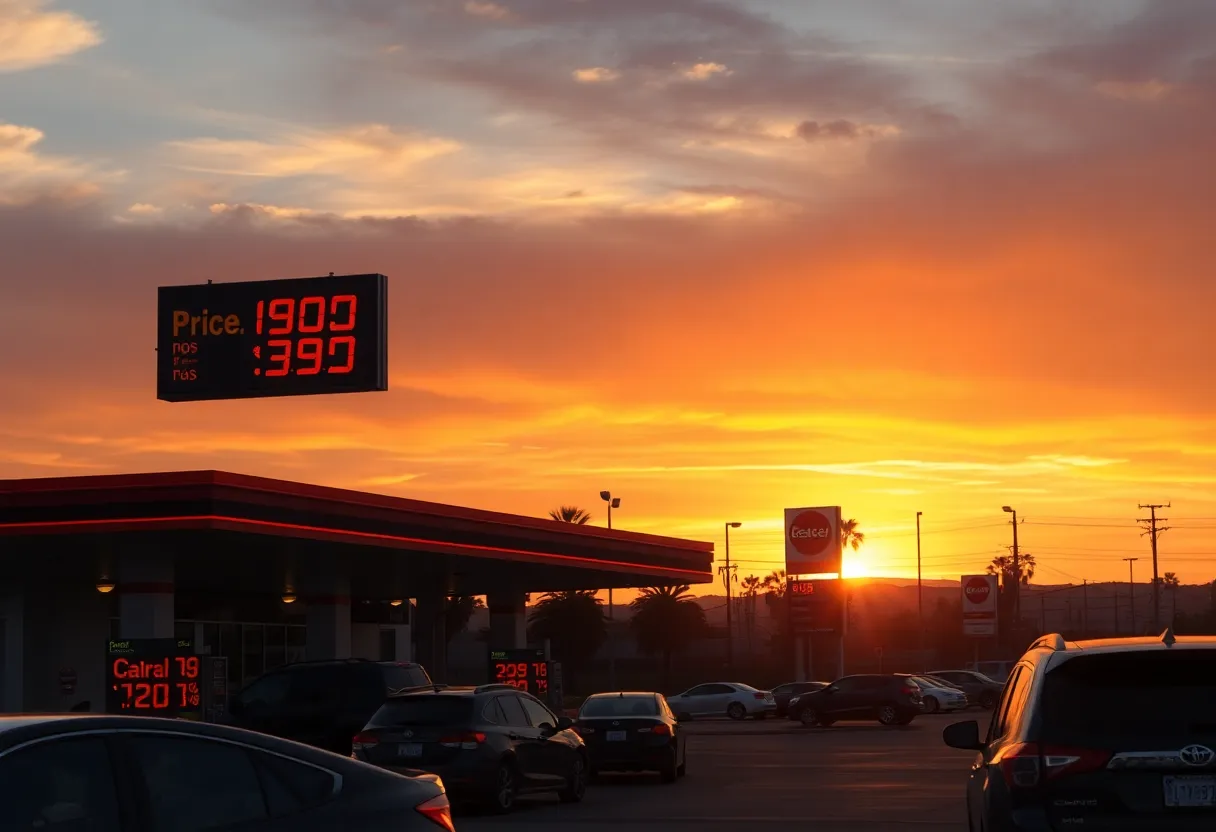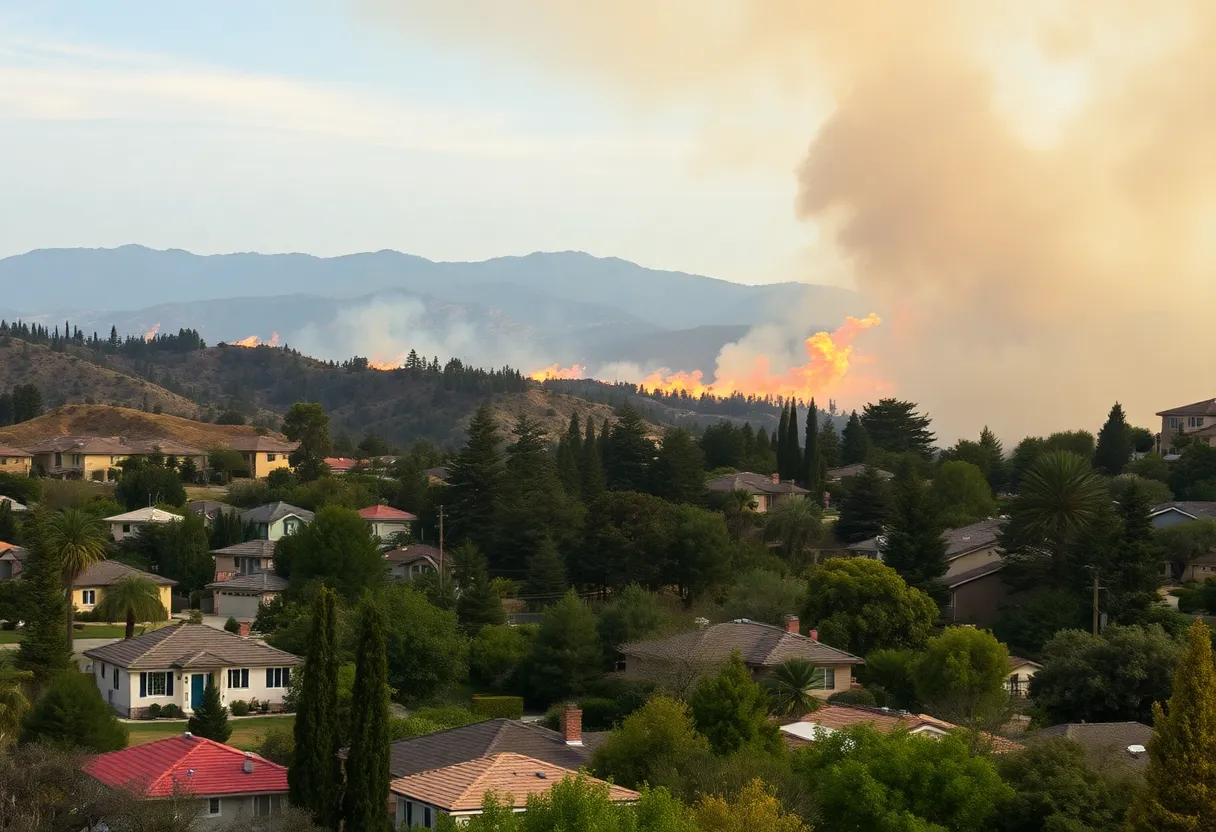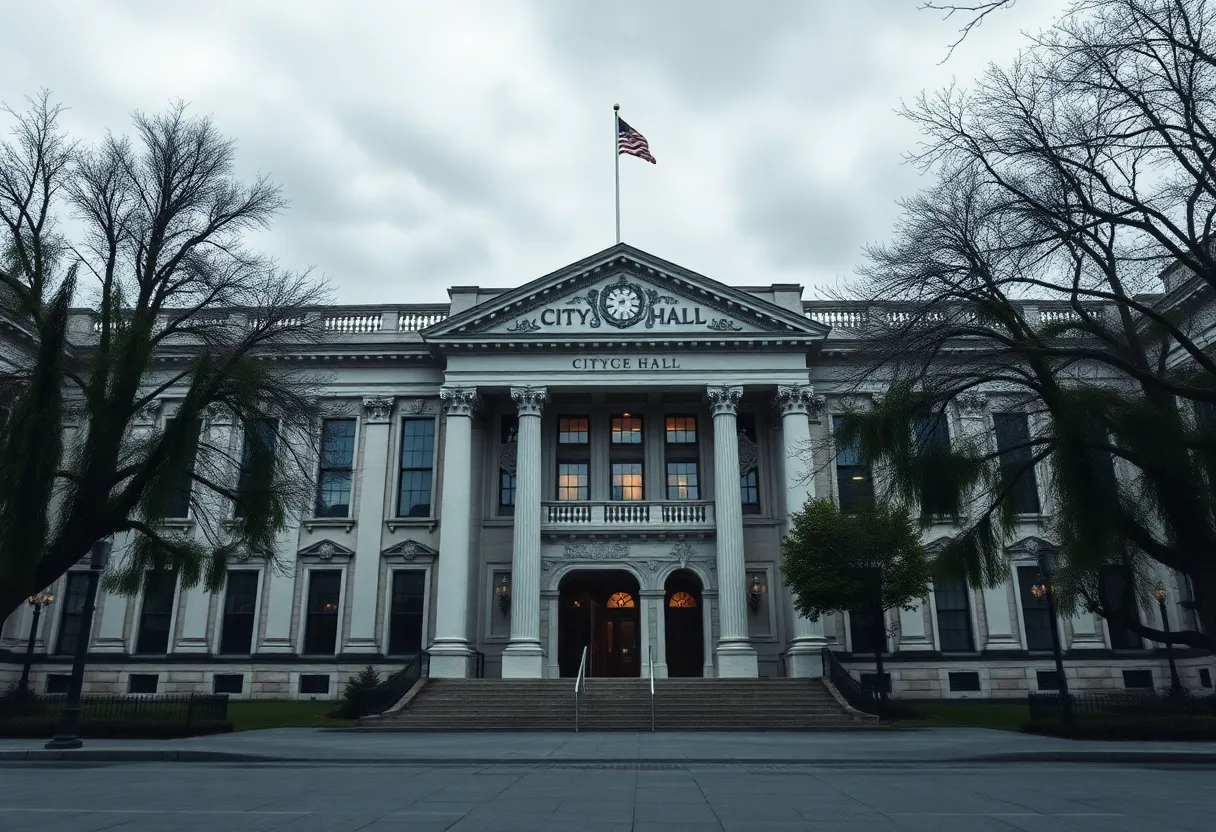News Summary
California is preparing for a significant increase in gas prices, with estimates suggesting costs may exceed $8 per gallon by 2026. This potential rise is attributed to refinery closures that could reduce the state’s refining capacity by 21%. The report highlights that the demand for fuel is unlikely to decrease, leading to a significant supply shortfall. Several factors, including rising taxes and geopolitical disruptions, could further elevate prices, prompting concerns among consumers. Local leaders are calling for immediate action to address the impending energy crisis and safeguard supplies.
California is bracing for a significant spike in gas prices, with projections estimating that costs could exceed $8 per gallon by the end of 2026. This potential increase would mark a staggering 75% rise from the current average price of $4.82 per gallon, according to a recent report conducted by Michael A. Mische from the University of Southern California’s Marshall School of Business.
The report anticipates that the price for regular gasoline could range between $7.35 and $8.43 per gallon. Contributing to this surge are expected refinery closures, notably Phillips 66 in Los Angeles and Valero in Benicia, which are anticipated to lower California’s refining capacity by 21% over the next three years.
The impending refinery closures could diminish the state’s gasoline supply by 6.6 million to 13.1 million gallons per day. Currently, California’s daily fuel consumption stands at over 13.1 million gallons. With California producing less than 24% of its crude oil needs, the state heavily relies on imports to meet its fuel requirements.
Mische highlights a crucial factor in the predicted rise: the demand for fuel is unlikely to decrease by 20% to correspond with the reduced supply, resulting in a significant shortfall. Furthermore, California faces a 20% reduction in refinery production capacity, a figure that is more than half of Washington State’s total production capacity.
Various elements are contributing to the rising fuel prices in California, including increasing state excise and sales taxes, costs tied to the cap-and-trade program, and pending adjustments to the Low Carbon Fuel Standard (LCFS). In addition, the state’s declining in-state oil production and refining capacities, absence of new fuel pipelines, and reliance on costly maritime transport exacerbate the situation.
Mische also warned of vulnerabilities within the logistical supply chain, emphasizing that geopolitical disruptions could worsen existing issues and lead to further price increases. The anticipated changes to the LCFS might push prices up by nearly 10%, which would add to the financial strain on consumers.
The discussion around rising gas prices is practical for many in California. Local gas station owner Ernie Giannecchini, for example, has reported raising his gas prices from below $4 to $4.49 per gallon, although this remains below the state average. Concern among consumers is rising, prompting some to explore alternative transportation methods, such as public transit, as a means to cope with potential increases in fuel costs.
Amid these predictions, California Governor Gavin Newsom’s office has stated intentions to collaborate with refiners to ensure a stable gasoline supply. In contrast, Senate Minority Leader Brian W. Jones has issued a warning about an impending energy and economic crisis linked to the refinery shutdowns, calling for urgent action from the state’s leadership.
Despite the substantial predictions outlined in Mische’s report, some have questioned its credibility, including representatives from the Governor’s office, who have claimed that Mische is financially supported by interests aligned with foreign oil, specifically Saudi Arabia. Mische has countered these allegations, clarifying that his work on Saudi Arabia’s Vision 2030 was geared towards diversifying the economy away from fossil fuels, rather than focusing on petroleum production itself.
The projected refinery closures are expected to impact the workforce significantly, potentially eliminating about 1,300 direct jobs along with approximately 3,000 indirect jobs. Without any substantial regulatory changes or state intervention, California’s gas prices may continue to escalate, imposing greater economic burdens on residents as they prepare for a potentially challenging future.
Deeper Dive: News & Info About This Topic
- ABC7 News
- Wikipedia: Gasoline
- SFGATE
- Google Search: California gas prices 2026
- Fox Business
- Google Scholar: California gas prices refinery closures
- KTLA
- Encyclopedia Britannica: California
- CBS News
- Google News: California gas price predictions

Author: Anaheim Staff Writer
The Anaheim Staff Writer represents the experienced team at HEREAnaheim.com, your go-to source for actionable local news and information in Anaheim, Orange County, and beyond. Specializing in "news you can use," we cover essential topics like product reviews for personal and business needs, local business directories, politics, real estate trends, neighborhood insights, and state news affecting the area—with deep expertise drawn from years of dedicated reporting and strong community input, including local press releases and business updates. We deliver top reporting on high-value events such as major conventions at the Anaheim Convention Center, including NAMM and VidCon, exciting games at Angel Stadium and Honda Center, and developments at Disneyland Resort Our coverage extends to key organizations like the Anaheim Chamber of Commerce and Visit Anaheim, plus leading businesses in hospitality, entertainment, and innovation that power the local economy As part of the broader HERE network, including HERECostaMesa.com, HEREHuntingtonBeach.com, HERESantaAna.com, and HERELosAngeles.com, we provide comprehensive, credible insights into Southern California's dynamic landscape.




